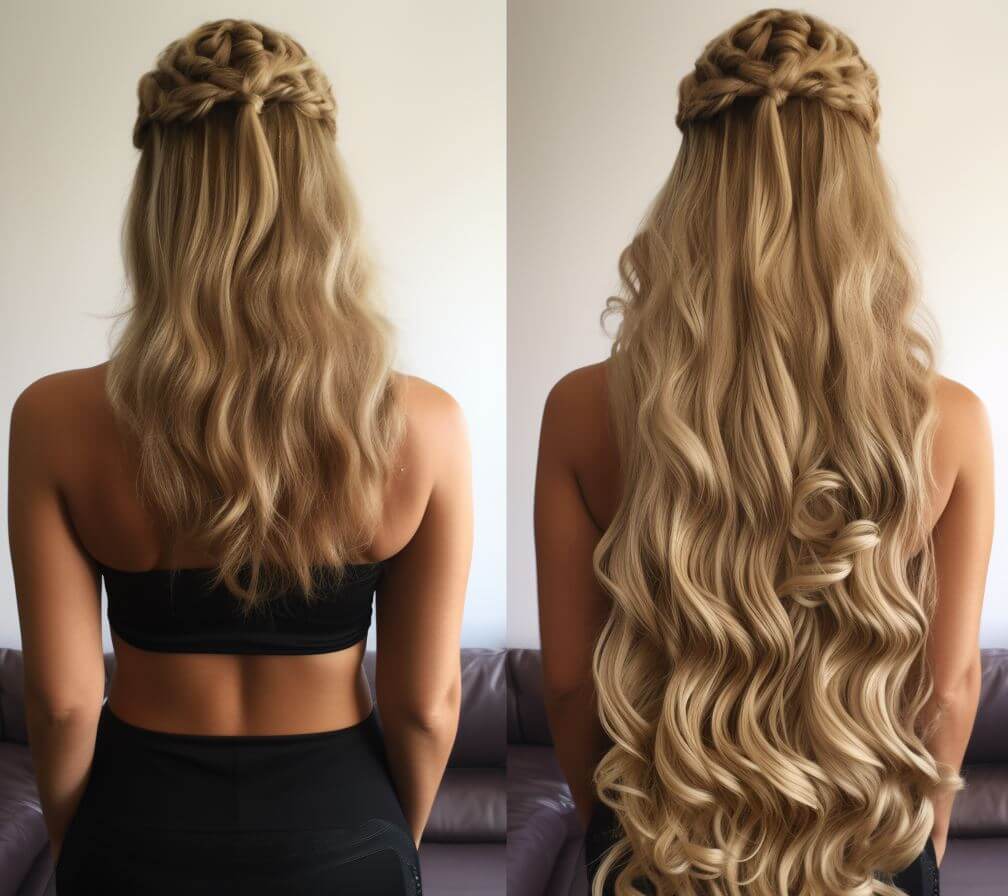
Hair extensions have become a cornerstone in the beauty industry, offering versatility and transformation to countless individuals. However, an essential aspect often overlooked is the longevity and durability of these extensions. This comprehensive blog post will delve into the various types of hair extensions and how their lifespan impacts the overall beauty experience.
The Lifespan of Hair Extensions: A Crucial Consideration
When investing in hair extensions, understanding their potential lifespan is crucial. The durability of hair extensions depends on various factors, including the type of extensions, the quality of hair used, the application method, and maintenance practices. Each type of extension comes with its own set of longevity expectations, which can significantly influence a user’s choice.

Clip-In Extensions: The Epitome of Flexibility
Clip-in hair extensions are known for their ease of use and flexibility. Typically, these extensions can last anywhere from three to six months up to a year or more, depending on how frequently they are worn and how well they are cared for. The key to extending the life of clip-ins is proper storage and gentle handling. Since they are not worn permanently, they endure less daily wear and tear, which can considerably extend their lifespan. Eliza Gomez, who runs luxury hair salon specialising in hair extensions called Style Lab highly recommend this type of extensions – “if you look after them, they last forever”- she says. “I have clients who wear those for more than 5 years!”
Tape-In Extensions: Balancing Longevity with Regular Maintenance
Tape-in extensions offer a semi-permanent solution and generally have a lifespan of four to eight weeks before they require reapplication. The adhesive used in tape-ins can break down over time, especially with exposure to oils and frequent washing. However, with proper care and regular maintenance, these extensions can be reused several times, offering a good balance between longevity and the need for upkeep.

Weave or Sew-In Extensions: Durability for the Long Haul
Weave or sew-in extensions are known for their durability. When properly maintained, they can last anywhere from six to eight weeks. The longevity of weaves largely depends on the growth rate of your natural hair and how well you maintain both the extensions and your scalp. Regular washing, deep conditioning, and proper drying are essential to prevent matting and build-up at the braids.
Fusion Extensions: The Commitment to Long-Term Wear
Fusion or pre-bonded extensions are perhaps the most durable, offering a lifespan of about four to six months. These extensions are bonded to natural hair using keratin tips and are designed to be a long-term hair enhancement solution. The key to their longevity is the avoidance of oil-based products near the bonds and gentle, consistent hair care. Despite their durability, fusion extensions do require commitment and regular salon visits for maintenance and removal.
Micro-Link Extensions: The Sturdy and Adjustable Option
Micro-link extensions can last up to four months and are known for their sturdiness. As these extensions are attached using small beads, they can be moved up as the natural hair grows, thereby extending their lifespan. The durability of micro-link extensions greatly depends on avoiding pulling or tugging, which can loosen the beads, and regular professional adjustments.
The Impact of Hair Quality on Extension Longevity
Beyond the type of extension, the quality of the hair plays a pivotal role in its lifespan. Extensions made from high-quality, Remy human hair tend to last longer than synthetic or lower-grade human hair. Remy hair maintains the cuticle layer, ensuring that the hair remains smooth, tangle-free, and natural-looking for a longer period.
Maintenance: The Key to Maximizing Lifespan

Proper maintenance is essential, irrespective of the type of extensions you choose. This includes using sulfate-free shampoos, avoiding excessive heat styling, brushing gently with a suitable brush, and regular conditioning treatments. It’s also crucial to follow specific care guidelines provided by your stylist, as each extension type has its own care needs.
Regular Salon Visits: Essential for Extension Upkeep
To ensure the longevity of your extensions, regular salon visits are a must. These visits allow for professional adjustments, reapplication, or removal as needed. A stylist can also address any issues such as matting, slippage, or damage, both to the extensions and the natural hair.
If you’d like to find out more about extension types, you should watch this video:
Lifestyle Considerations: Aligning Choices with Daily Habits
Your lifestyle also plays a significant role in the durability of your hair extensions. If you lead an active lifestyle, swim regularly, or frequently style your hair, certain types of extensions may be more suitable than others. Discussing your daily routine with your stylist can help you choose extensions that will not only look great but also last longer and suit your lifestyle.
Summary
In summary, the durability of hair extensions varies significantly based on the type, quality, and maintenance. Understanding these aspects can help you make an informed decision about which extensions will best meet your needs and expectations. By investing in quality extensions, adhering to proper care practices, and maintaining regular salon visits, you can enjoy beautiful, long-lasting hair extensions that enhance your look and confidence. The world of hair extensions is diverse and offers solutions for everyone, but the key to enjoying their benefits lies in understanding and respecting their maintenance and care requirements.



